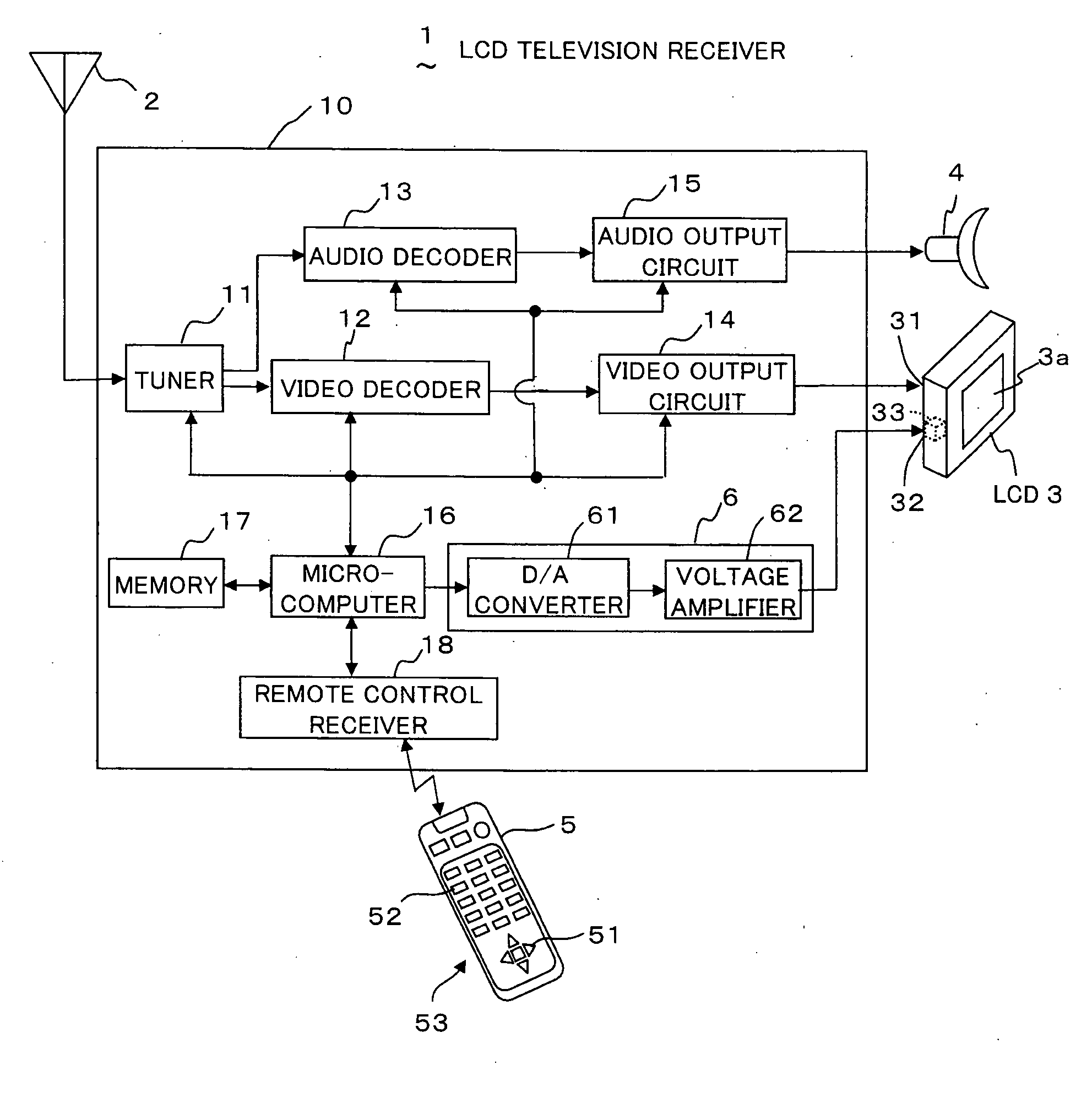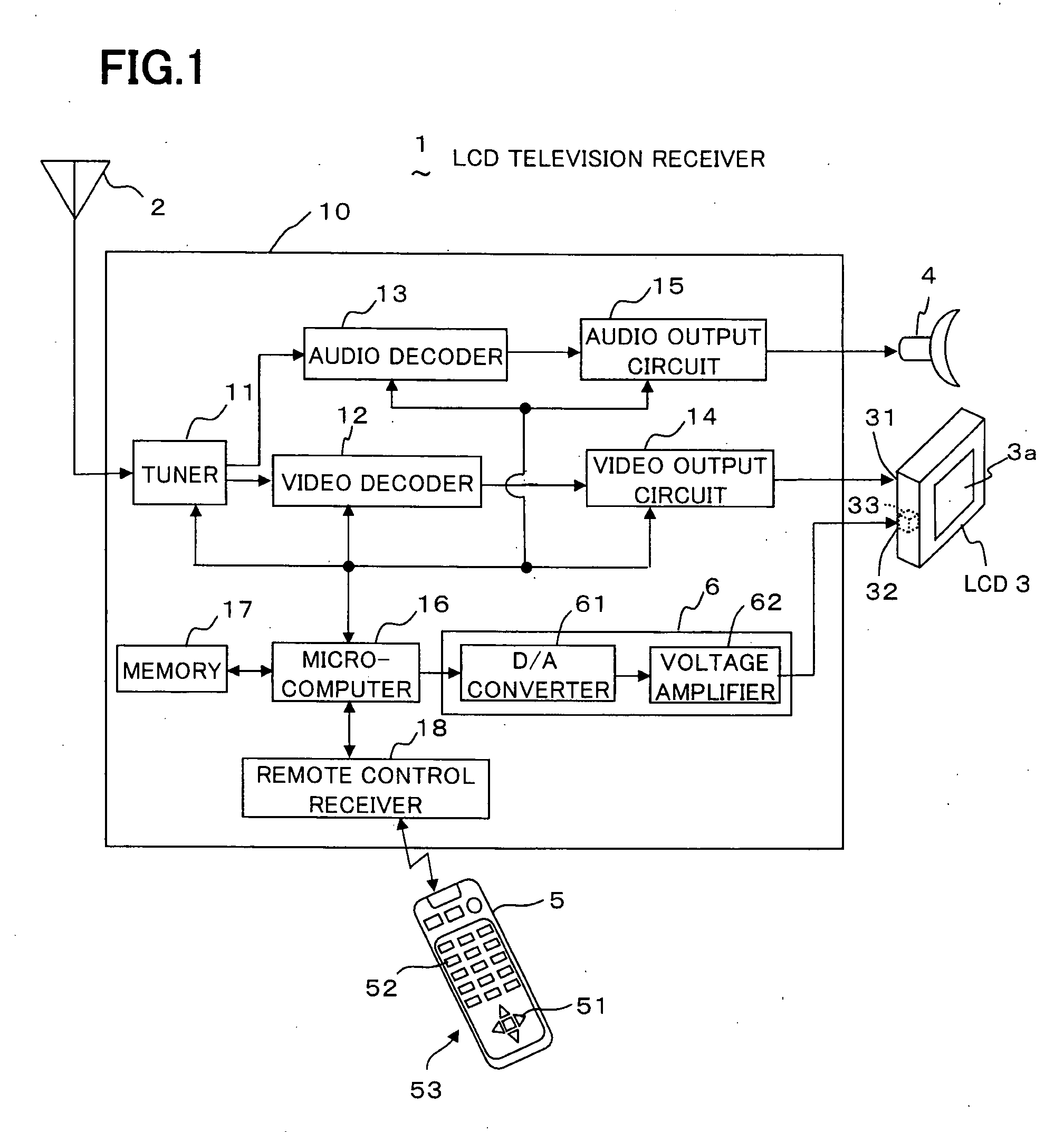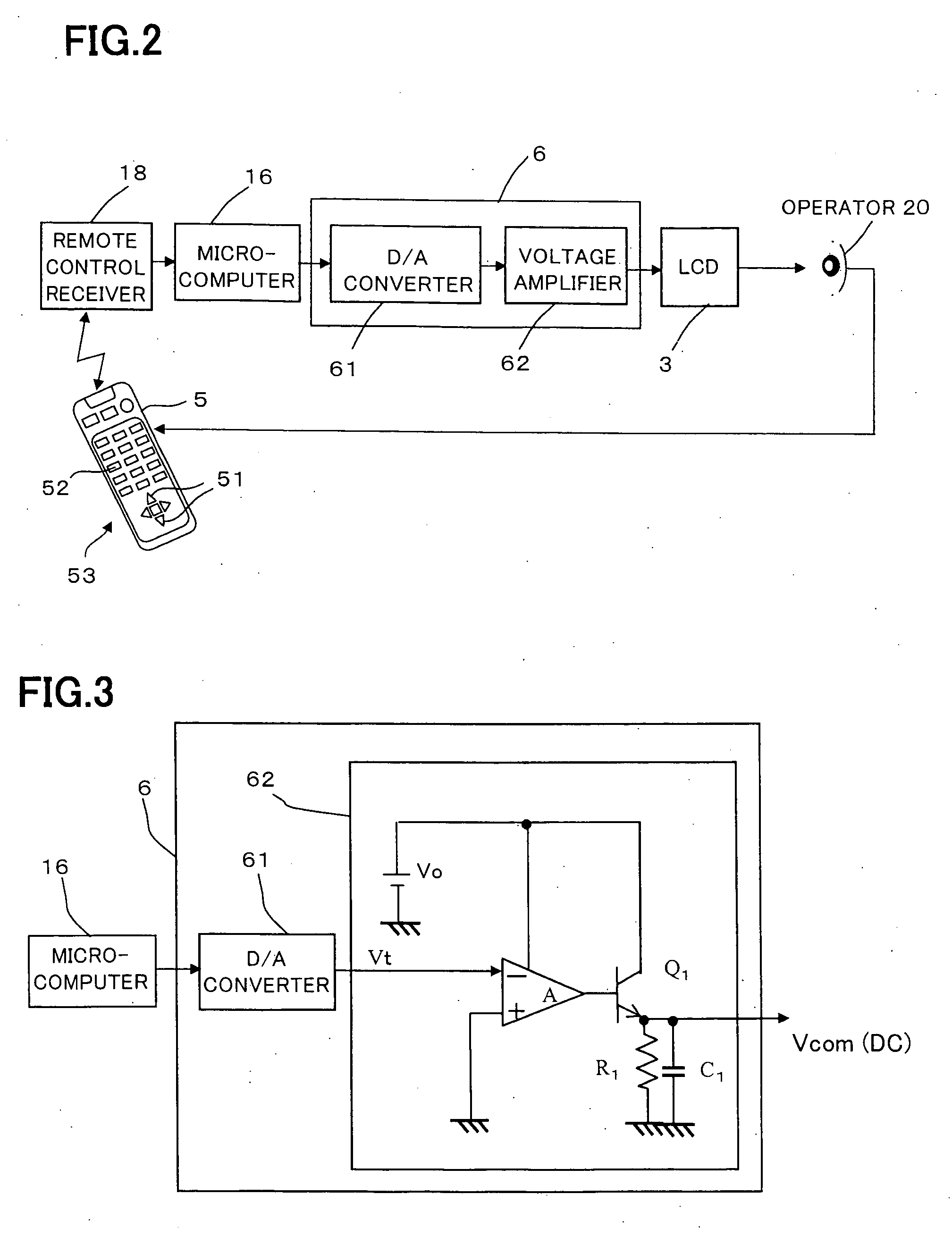Liquid crystal display device
a liquid crystal display and display device technology, applied in the field of liquid crystal display devices, can solve the problems of reducing display quality, burning images, and not being able to reduce the dc component to zero, and achieve the effect of accurate adjustment and stable image quality
- Summary
- Abstract
- Description
- Claims
- Application Information
AI Technical Summary
Benefits of technology
Problems solved by technology
Method used
Image
Examples
first embodiment
[0035]FIG. 1 is a schematic block diagram of a liquid crystal display (hereafter referred to as “LCD”) television receiver 1 as an LCD device according to the present invention. Referring to FIG. 1, the LCD television receiver 1 comprises a television receiver body 10, an antenna 2, an active matrix type liquid crystal display (“AM-LCD”) 3 (claimed liquid crystal display unit) with a liquid crystal panel 3a of active matrix type for displaying images, a speaker 4 for outputting sounds, and a remote control unit 5 (claimed remote controller).
[0036] The television receiver body 10 comprises: a tuner 11 for selecting a channel in television signals from the antenna 2 by operating an up / down key 51 and / or a ten key 52 (e.g. numeric keys of 1 to 16) in a key unit 53 of the remote control unit 5; a remote control receiver 18 for receiving controls signals from the remote control unit 5 to e.g. the tuner 11; a video decoder 12 for decoding a video signal; an audio decoder 13 for decoding a...
second embodiment
[0048] Since the LCD television receiver 70 of the present invention has such function as described above, an operator (human) can make flicker adjustment while viewing not only amount of flickering of the checkered pattern displayed in the test pattern display area 83, but also color displayed in the color bar display area 82. Thus, the LCD television receiver 70 facilitates easy flicker adjustment by the operator, and in addition, reduction of adjustment variation due to different operators.
[0049] It is to be noted that the present invention is not limited to the above embodiments, and various modifications are possible. For example, in the embodiments described above, a power supply of 3.3 V is used to operate the microcomputer 16. However, a power supply e.g. of 5.0 V can be used instead. Since the power supply of 5.0 V enables use of a higher driving voltage, the use of the power supply of 5.0 V makes it possible to apply the output voltage from the D / A converter 61 directly to...
PUM
 Login to View More
Login to View More Abstract
Description
Claims
Application Information
 Login to View More
Login to View More - R&D
- Intellectual Property
- Life Sciences
- Materials
- Tech Scout
- Unparalleled Data Quality
- Higher Quality Content
- 60% Fewer Hallucinations
Browse by: Latest US Patents, China's latest patents, Technical Efficacy Thesaurus, Application Domain, Technology Topic, Popular Technical Reports.
© 2025 PatSnap. All rights reserved.Legal|Privacy policy|Modern Slavery Act Transparency Statement|Sitemap|About US| Contact US: help@patsnap.com



